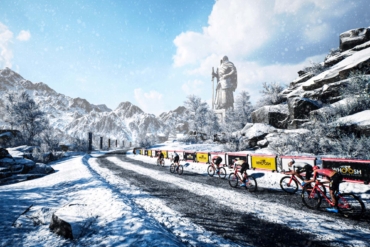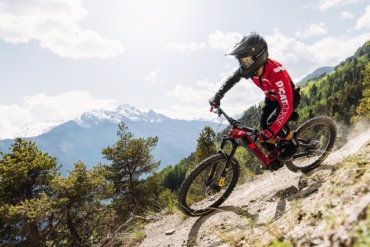Ready to hit the open road on two wheels? From riding jerseys to repair kits, this biking gear list will get you outside and pedaling in no time.
Road biking is so appealing because most of us have pavement just beyond our front door. But step inside your local bike shop and you’ll quickly find that the world of road riding can be rather complex. From chain lubes to pressure gauges, finding the essentials for the road ahead can pose a challenge if you’re a beginner.
Fortunately, a few road biking essentials always seem to make the cut no matter your experience level. This road biking checklist will serve as a general guideline to give you a baseline of essential gear. What you need will vary depending on your budget and experience.
Download Printable ChecklistBasic Road Biking Gear
Bike
To hit the open road on a bike, you’re going to need a road bike. What sets this type of bike apart from other options? Road bikes present distinct features and drawbacks depending on the type of bike you choose.
For instance, touring road bikes have racks to haul large amounts of gear and fatter tires to help manage the weight. Racing road bikes, on the other hand, are sleeker and stripped down to make you as fast as possible.
When searching for your first road bike, begin by establishing a budget. From there, take a look at prices and reviews to determine which bikes fall within that budget. A great launching point is to find the best bikes within your price range to learn more about finding an affordable bike.
Helmet
Although it may be possible to shop for a used bike and save a little money, the same can’t be said for your helmet. The two key factors to consider when purchasing a bike helmet are fit and design.
An ill-fitting lid can leave you prone to injury in the event of a crash. Keep in mind that you’ll also be wearing your helmet for miles, so the fit should be comfortable and secure.
To find a properly sized bike helmet, check the manufacturer’s measurement scheme, and take the time to measure your head circumference. Additionally, look for road biking-specific helmets, as mountain biking helmets offer different features.
Clothing
Padded Shorts
If you plan on biking shorter distances, say to the office or class, you may not need a pair of padded shorts. However, if you want to spend more time on your road bike and tackle longer distances, invest in a pair of padded shorts that improve comfort and efficiency while cycling.
Cycling shorts may look funny and feel unfamiliar, but the extra padding between you and the seat will reduce soreness and provide reliable comfort during long rides.
Still, have questions about bike shorts? Take a look at our article that examines everything you need to know about this important piece of cycling gear.
Cycling Jersey
Where you go choose to go road biking will determine which jersey is right for you. Those that ride in colder climates should look for long-sleeve jerseys that deflect wind and provide insulation. Others that ride in the heat should look for moisture-wicking fabrics that are designed to keep you cool.
Most cycling jerseys will feature a long zipper in the front for added ventilation, as well as three rear pockets to store food and other supplies that you may need on longer trips. A basic cycling jersey for beginners should be breathable, affordable, and not too tight.
If you’re looking for inspiration, check out this pro’s full gear list.
Gloves
Cycling gloves will not only protect your skin but also provide a lot of cushioning. They are extremely important for long hours on the handlebars. With lots of vibration and constant shock, your hands will tire out much faster without them.
Most gloves for road biking are fingerless, with padding on the palms of the hands and thin fabric over the backs. Check out a selection of bike gloves here.
Bike Accessories
Water Bottle & Bottle Cage
Maintaining your fluids is essential when on a bike for extended periods, especially in the summer heat. You may notice that most road bikes have bolts on the downtube and the seat tube of the frame. These are specifically designed to fit a bottle cage to store your water bottle.
A beginner road bike will have components to secure one or two bottle cages to the frame.
Bike Pack
Whether you’re riding a few miles with friends or taking part in your first century ride, you’ll need a bike pack to store repair equipment, valuables, and other loose items.
Though bike packs come in a wide range of shapes and sizes, beginners can make use of a seat pack, or saddle pack, that fits securely under your bicycle seat. These are best for carrying smaller items such as a multitool, spare tube, tire levers, a patch kit, or an energy bar.
The Topeak Aero Wedge is an excellent starting point.
Lights
Before you buy a front and rear bike light — and you should buy both — consider the brightness levels, number of light modes, battery life, materials used, mounting types, and beam patterns.
Lights that are brighter and more sophisticated will cost more, and many lights can run a pretty penny. Set a budget and find the lights that meet your needs within that price point.
For more information on riding safely at night, check out our article that contains useful night biking tips.
Mirror
Just as you need mirrors to see when driving a car, you may want a mirror to monitor what’s behind you as you focus on what’s ahead. A bike mirror is often inexpensive and can be fixed to your bike or your helmet depending on your preference.
Repair Items
Pumps & Inflators
The two pieces of equipment that can be used to inflate a spare tube on the road are mobile bike pumps and CO2 pumps. A mobile bike pump will measure less than a foot long and secure to your seat tube, ready and waiting for the moment you need it.
A CO2 pump, on the other hand, will utilize a nozzle and a pressurized CO2 cartridge. Once the seal on the cartridge has been broken, it can only be used once before you need to purchase a replacement cartridge. Make sure you check with the manufacturer or at your local bike store to make sure you get the right size CO2 cartridge and nozzle!
Spare Tube
A spare tube is essential when you’re biking on the road because a flat tire can occur when you least expect it. To determine which size spare tube will fit your bike, refer to the sidewall of your bike tire and look for two numbers that signify the wheel diameter and width range, e.g. 26 x 1.95”. Bring this information to your local bike shop, where an employee can get the right tube size for your bike.
When a spare tube is not in use, store it in your bike pack alongside your other repair items. Doing so will ensure you’re never away from home without these two pieces of important equipment.
Repair Tools
Bike repair tools come in various shapes and sizes, but the two tools to bring on your ride are a bike multitool and a set of tire levers. A bike multitool is the cyclist’s equivalent of a Swiss Army Knife, with a range of tool bits that can be used to make repairs or adjustments, such as altering the height of the seat or tweaking the gears.
A set of tire levers may be cumbersome, but these small pieces of plastic will save you from a headache when changing a flat on the side of the road.
Personal Items
Eye Protection
Cycling glasses serve a dual purpose of protecting your eyes from debris and reducing the glare of the sun to provide better visibility.
There are so many fantastic cycling sunglasses available. Some even feature advanced technology such as a heads-up display that provides real-time feedback and stats. When shopping for bike sunglasses, ensure the fit is secure along the sides of your head and the bridge of your nose.
If a pair of biking glasses isn’t within your budget, pick up a pair of activewear sunglasses that make for a simple replacement. They should protect against UV rays.
Emergency Information & First-Aid Kit
Believe it or not, motorists are known for hitting cyclists and leaving them unconscious — or worse — on the side of the road.
Carrying an ID and contact information will provide emergency services with your personal information should you ever require medical assistance. If you don’t feel comfortable packing your ID, write down your personal information on a slip of paper that can be tucked into your bike bag.
Additionally, while a miniature first-aid kit, or crash pack, isn’t a common item amongst cyclists, it can still prove useful if you or a fellow rider needs immediate medical attention. If you’re pressed for space, consider bringing a few bandages or gauze that can treat road rash.
Sunscreen
Though your helmet, jersey, and padded shorts will shield parts of your body from the sun, the same can’t be said for your face, lower legs, and arms. Apply a layer of sunscreen before your ride, and pack a travel-size sport sunblock in your bike pack to reapply when necessary.
Snacks
Just as you’ll need fluids on your ride, you need snacks and fuel to prevent your body from crashing. Your muscles crave a constant supply of energy, and longer rides will quickly deplete your body’s glucose levels.
You can pack snacks in the pockets of your jersey or in your bike pack, but keep in mind that every inch of space counts when you’re on the road.
Many cyclists prefer to pack energy bars, gels, gummies, or powders that mix into their fluids. These snacks will provide an immediate source of simple sugar for optimal fuel without taking up too much space on the bike.
Tips for Road Biking Beginners
When you’re putting on your gear and packing your bike bag, lay out all the essential items on the floor before securing them to your bike. This way, you can inspect your gear and make sure you have everything on your list.
Perform a pre-ride inspection of your bike before you depart to make sure everything is in working order. To do this, simply remember your ABCs: air, brakes, and chain.
Check the air in your tires by consulting the PSI recommendations on the wall of your tire. Squeeze your front and rear brake levers to make sure they properly engage. And inspect your chain for excess dirt and optimal lubrication.
Hitting the open road as a beginner can be intimidating. Take some time to find others in your community who can accompany you for the journey, and always remember to take things slow. After all, cycling is a sport that only asks you to keep on pedaling.
Before you know it, the miles will start to roll on by.









